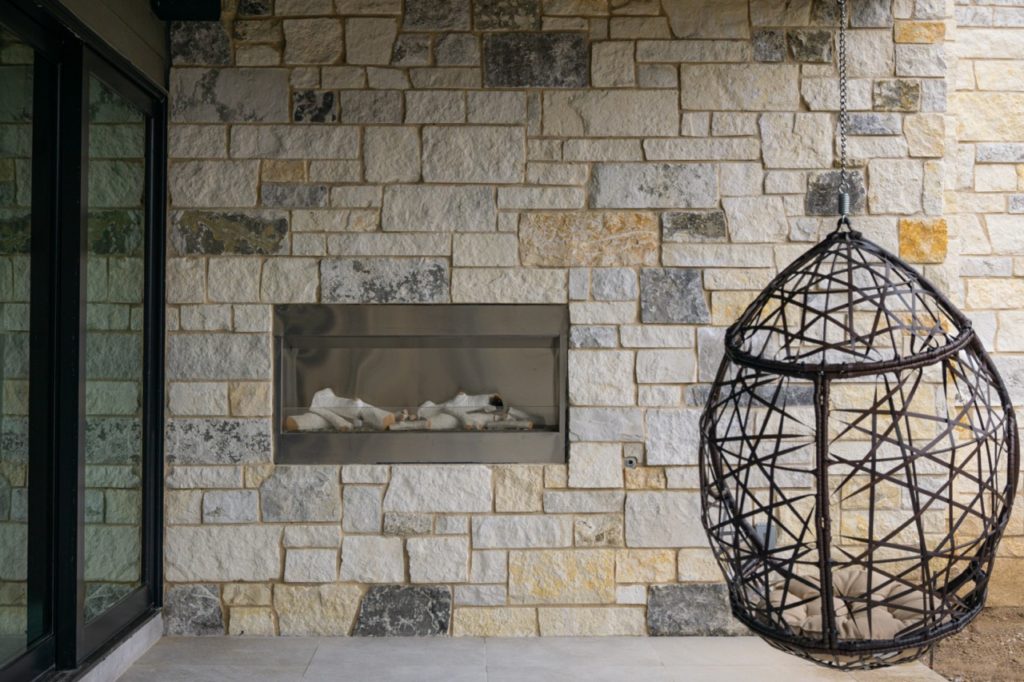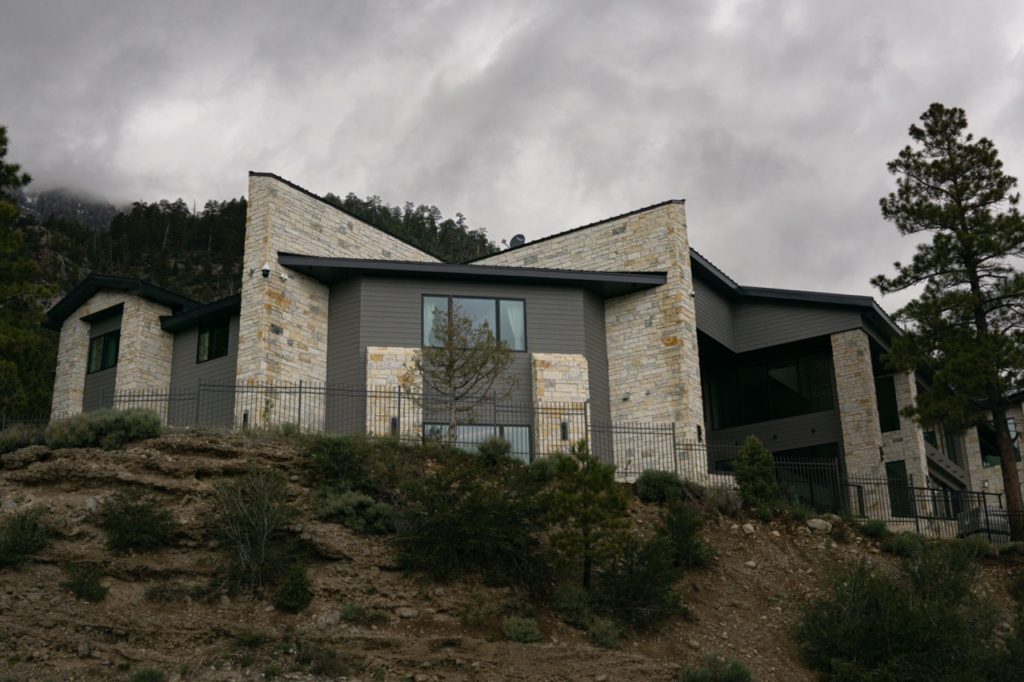Case Study: Mt. Charleston Cabin
Words: John Brackenbury
Words: John Brackenbury, Project Manager at Hirschi Masonry
Photos: Jessenia Abrego
Q. Can you tell me about the process of selecting and installing the stone in the custom home at Mt. Charleston?
A. For this project, the owner had already selected and purchased the material; the vendor had recommended Hirschi over their mason due to the scale of the project and time constraints with the weather.

Q. What types of stone were used in the project?
A. The Stone was Jacobs Stone, a natural, thin veneer out of Texas. Because the customer wanted clean lines on the height, the tops and bottoms of the stone were cut, but the ends were snapped to break up the patterns.
Q. What challenges did you face on the job?
A. Weather! The customer was concerned about having the stone on the house before the snow hit… Our crews are used to warm three-season weather conditions in Las Vegas, so tents and heaters were new to them, but by tenting the house and blowing heat into the tents, we were allowed to work throughout snowy days and prevented the mortar from freezing and thawing overnight. We also had to increase manpower to see the project through in a short amount of time.
Beyond the weather, the house is located on a mountain lot with several grade changes, and the house takes up a majority of the lot, leaving us with little area to build a scaffold. That, combined with the snow, the crews were left with muddy terrain, which created slip/trip hazards at ground level.
Q. How did your team ensure proper installation of the stone?
A. The substrate was prepared by others. We helped coordinate the application and ensured the lath was installed per manufacturer recommendations. This can be one of the challenges of being a finish trade, and when the substrate is installed incorrectly, it tends to be a customer service nightmare. On a customer's home, when we are working throughout the build process, we can make sure the other trades before us are on the same page with what our needs are. Fasteners, lath lapping, paper and flashings all help determine the longevity of our product.
Q. Can you share any feedback or reactions from the homeowner regarding the stone installation?
A. The homeowner was completely happy with the install. From the beginning, we had very little interaction with the owners (who have used other masons in the past and run a construction company), and since this is their personal residence, we had to make them feel comfortable. The moment that won the owner over was as simple as asking if they would like to install a precast light box around their fixtures (they had a significant number of fixtures) and explaining "the why" behind adding a light box. The short story, the stone has texture and mortar joints throughout, and a light box provides a flat surface to mount lights, cameras, etc. When I presented this option, the owner stopped me, walked us over to the house next to the new construction, and showed me all of the gaps behind the lights that were packed with silicone. By simply catching this small detail ahead of the installation, we had found a way to relate to the owner and had gained his trust. After that, it was simply performing the install and supporting any punch list items to deliver a clean project to a happy customer.
